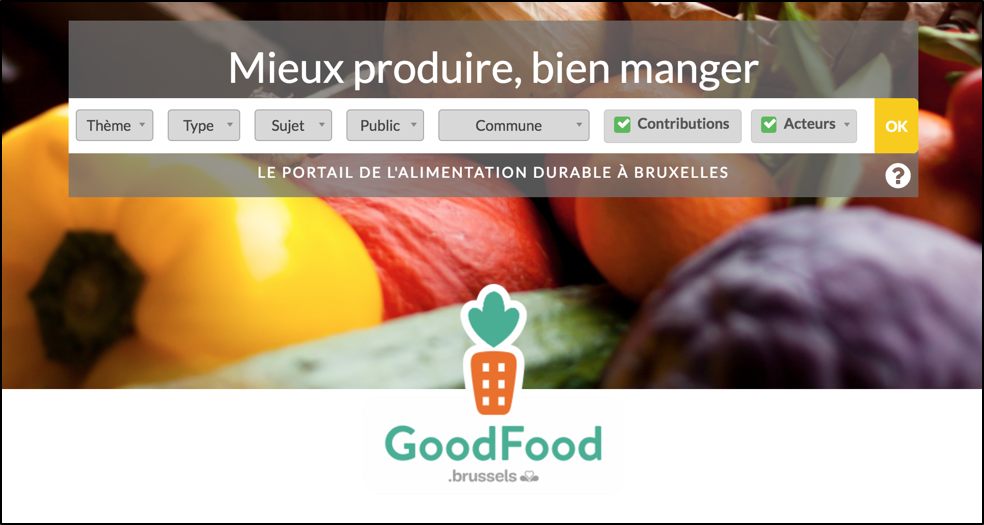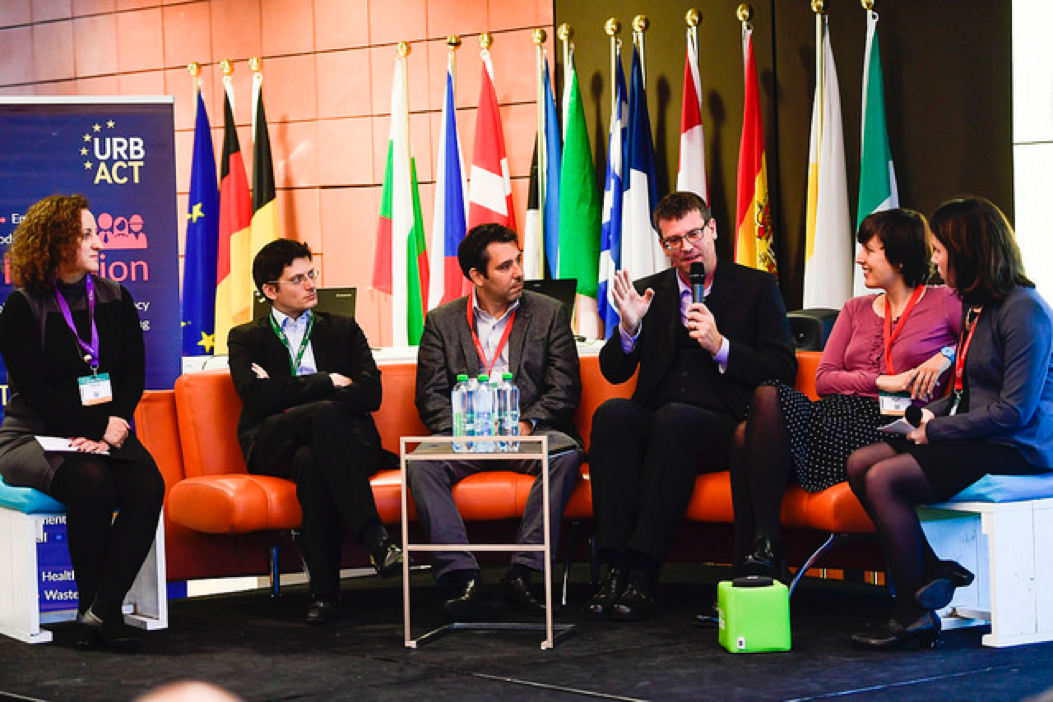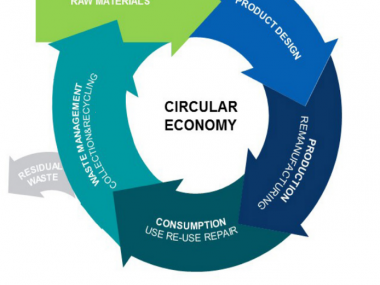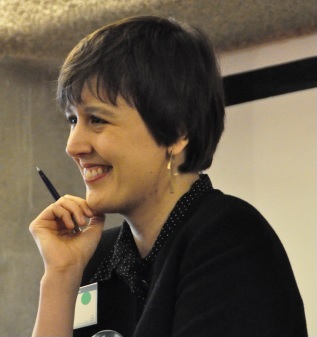From a linear to a circular economy
The conventional understanding of economic activity is based on a linear model: natural resources are extracted and transformed into products; the products are bought and used by consumers who, as soon as the products no longer fulfill their needs, throw them away. However, this model ignores the high economic, environmental and social costs related to the extraction, transformation and disposal of resources, and is therefore unsustainable in the long term.
A circular economy offers an alternative model where the value of products, materials and resources is maintained for as long as possible and waste is significantly reduced or even eliminated. Focused on “closing the loops”, a circular economy is a practical solution for living within our planetary boundaries. The transition towards a circular economy affects different policy areas, ranging from mobility, agriculture, land use and waste management, to business development and consumer education, concerning actors across all sectors and levels of governance. A circular economy is not something that any single institution or company can do alone. By its very nature, circular economy fosters connections across individual stakeholders and sectors.
What are the benefits?
Confronted with dwindling natural resources, we need to be aware that business as usual is no longer an option and that an economy built on a linear model is simply no longer viable. The transition towards a circular economy is therefore a necessity, but, as with every crisis, it is also a transformative opportunity that can offer long-term economic, social and environmental benefits.
- Improved resource security and decreased import dependency: thanks to reduced demand for primary raw materials.
- Reduced environmental impact: including a drastic reduction in greenhouse gas emissions.
- Economic benefits: including new opportunities for growth and innovation, as well as savings related to improved resource efficiency.
- Social benefits: ranging from new job creation across all skill levels to changes in consumer behavior leading to better health and safety outcomes.
Circular economy on the European agenda
The potential of circular economy is acknowledged by a growing number of European countries and regions, as well as by European institutions. In December 2015, the European Commission adopted the
Circular Economy Package, with the ambition to boost global competitiveness, foster sustainable economic growth and generate new jobs. The package includes new and revised legislation with a focus on waste prevention and management, as well as a clear timeline for action and dedicated financial commitments. The Circular Economy Package refers to five priority areas to be addressed in a targeted way: plastics, food waste, critical raw materials, construction and demolition, as well as biomass and bio-based products.
Circular economy is also a theme of one of the
Urban Agenda for the EU partnerships. This is one of the 4 new partnerships approved in October 2016 by Directors-General responsible for Urban Matters. To be coordinated by the City of Oslo (Norway) and composed of Member States, cities, NGOs, and other key stakeholders, the partnership is expected to start in January 2017. One of the 12 themes included in the
Pact of Amsterdam, circular economy is linked to waste management, sharing economy and resource efficiency. The partnership will work to develop an Action Plan to achieve better regulation, better funding and better knowledge, with an objective to increase the re-use, repair, refurbishment and recycling of existing materials and products to promote new growth and job opportunities.
Social innovation for circular economy
What is often forgotten is that transition towards a circular economy calls for social innovation, as much as (and perhaps even more than) technological innovation.
URBACT’s “Social Innovation in Cities” report defines social innovation as “innovative solutions, new forms of organisation and new interactions to tackle social issues”, with a focus on “innovative solutions in terms of the governance of cities: new forms of collaboration between the city administration, citizens and local stakeholders which can generate more sustainable, resilient and open systems at city level.”
If implemented in a collaborative and inclusive manner, a circular economy can strengthen social cohesion and promote strong, solidarity-based local and regional economies. For a great example of how this can be done, consult the ideas and projects included in the
White Paper on the circular economy of Greater Paris. Paris is working to further scale up its social innovation ecosystem as part of
URBACT’s BoostInno network.
Taking the lifecycle perspective
Moving from a linear to a more circular economy calls for new business models, new modes of consumer behaviour and new solutions for turning waste into resources. The following diagram illustrates the key steps of the product lifecycle that need to be taken into account when designing new, circular models.
It is important to keep in mind the role local and regional authorities can play at each of the stages:
- When it comes to the product design stage, local and regional authorities can lead by example in purchasing products and solutions that are resource-efficient and durable, can be easily repaired or upgraded and finally recycled or reused. This encourages the market to develop such solutions and makes them not only more accessible, but also more affordable for other actors.
Venlo City Hall built according to cradle-to-cradle design principles and a great example of sustainable public procurement (photo: Ania Rok)
- Looking further at the production stage, cities and regions can work with other stakeholders to promote sustainable sourcing of raw materials and different modes of resource circulation, such as industrial symbiosis, chemical leasing or remanufacturing.
- Local and regional authorities are also well positioned to actively influence consumption patterns of households, businesses and organisations. This might include education and awareness campaigns, promoting sharing economy approaches, as well as encouraging reuse and repair.
- Finally, waste collection and recycling are two of the responsibilities most often associated with the municipal level. Improved waste collection can be a first step towards a circular economy but many cities and regions are also looking into extended producer responsibility or high-quality recycling and biological treatment of waste (e.g. bio-refining, composting or anaerobic digestion).
How can local and regional authorities foster a circular economy?
Local and regional authorities have an important role in launching and accelerating the transition to a circular economy, whether by leading by example, setting clear framework conditions or directly supporting local and regional stakeholders:
- As consumers, local and regional authorities can include circular economy considerations in their purchasing decisions by using green public procurement criteria and mechanisms such as pre-commercial procurement. In practice, this means assessing all costs related to the entire lifecycle of the product, including criteria related to maintenance, recycling and sustainable sourcing of raw materials.
- Cities and regions should integrate their commitment to a circular economy into relevant strategic documents, setting out local priorities, planned measures and forms of support available. This sends a clear signal to local and regional stakeholders, enabling them to plan their activities in the long term. The documents can include EU regional operational programmes, long-term development plans, environmental strategies, as well as other thematic or sectoral strategies (e.g. waste management or industrial development plans).
- Local and regional authorities can offer support to relevant stakeholders by providing targeted funding, access to knowledge and information, as well as networking opportunities. Financial support to a circular economy can take different forms, such as grants, loans, tax incentives or investment guarantees, either offered directly by the public sector or channeled via other actors, e.g. business associations or business development agencies. By sharing knowledge, organising events or setting up exchange platforms, cities and regions can initiate and facilitate activities by other local and regional actors such as businesses and public utilities, universities and research centers, civil society organisations or grassroots initiatives.

Source: http://www.goodfood.brussels/
A great example of how to engage local stakeholders is the
Good Food Brussels platform that connects initiatives across the entire food chain, increasing their visibility and encouraging cooperation. With the aim to increase local food production and reduce food waste, the Good Food platform and process build on the results of the URBACT
Sustainable Food in Urban Communities network in which Brussels-Capital Region acted as a Lead Partner.
The way forward
Cities and regions are uniquely positioned to accelerate Europe towards a more circular economy and harness economic, environmental and social benefits related to this transition. ESPON, Interact, Interreg Europe and URBACT call on cities and regions to act today, keeping in mind 4 simple takeaways.
1. Everyone can do it
A circular economy may appear complex, and it is easy to get discouraged with the technical jargon or the magnitude of changes needed. However, even the longest journey starts with the first step. By engaging with stakeholders and learning from others, every city and region in Europe can move towards a more circular economy. Rather than competing for the most advanced technical solutions, cities and regions can work towards different ways of thinking about resources, redefining what is considered valuable.
2. No need to reinvent the wheel
While a circular economy needs to be tailored to the local and regional context, there is a wide range of good practices already available. They can be adapted to suit local needs and resources, allowing interested cities and regions to quickly move ahead.
3. Collaboration, not competition
A circular economy thrives on connections, whether between business actors joined in an industrial symbiosis or cities exchanging knowledge and experience. The best way to make the first steps towards a circular economy is to join those that want to move in the same direction, or better yet, are already a few steps ahead.
4. European Territorial Cooperation programmes are here to help
European Territorial Cooperation programmes cover various dimensions of the circular economy, from research and innovation, through regional and business development, to participation and social innovation. Interested cities and regions are invited to make use of knowledge, funding and networking opportunities offered by respective programmes.
Read the
 Download Full Policy Brief (5.28 MB)
Download Full Policy Brief (5.28 MB) for more local and regional examples, as well as the overview of funding opportunities available to advance circular economy.






 Submitted by Ania Rok on
Submitted by Ania Rok on 